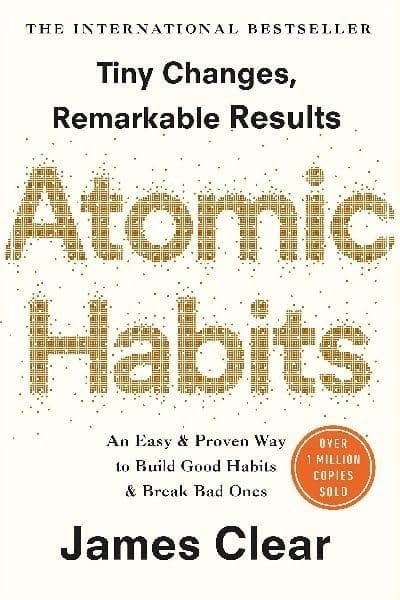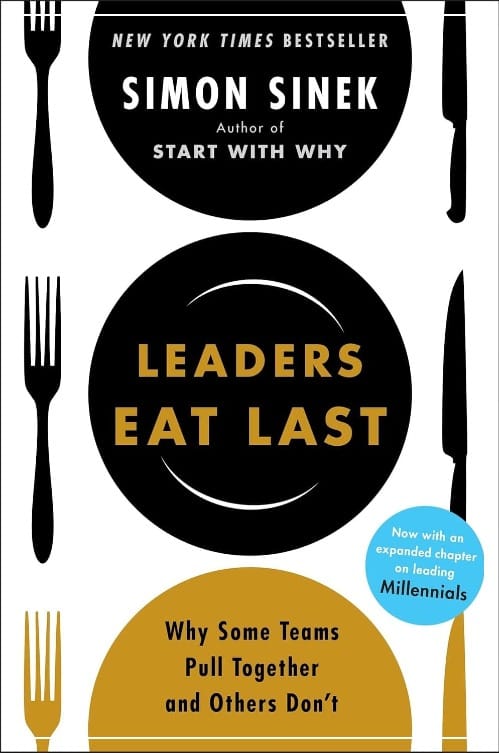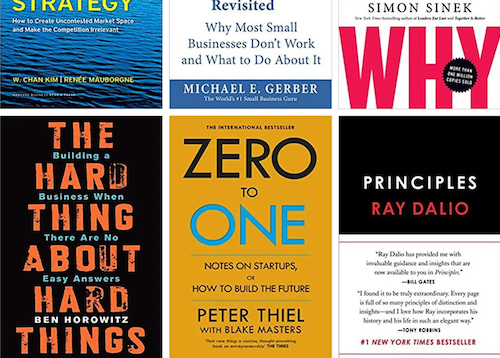Atomic Habits: The Power of Small Changes for Life-Changing Results
In Atomic Habits, James Clear offers a powerful guide to understanding how small, incremental changes—atomic habits—can lead to remarkable personal transformation. Learn how to build good habits, break bad ones, and create lasting change by mastering the science of behavior change.

Atomic Habits by James Clear has quickly become one of the most influential books on personal development, productivity, and habit formation. Its core message is simple yet profound: small, incremental changes in behavior—what Clear calls "atomic habits"—can lead to remarkable results over time. Clear’s book provides a framework for understanding how habits work, how to build good habits, and how to break bad ones. It’s a guide for anyone looking to improve their life through the power of consistent, small actions.
Table of Contents
- About the Author: James Clear
- The Core Philosophy of Atomic Habits
- The Habit Loop: Cue, Craving, Response, and Reward
- The Four Laws of Behavior Change
- The Power of Incremental Change
- Breaking Bad Habits
- Environment Design and Habit Formation
- How to Stay Consistent: The Importance of Identity
- Real-Life Applications of Atomic Habits
- Conclusion: The Compounding Effect of Good Habits
About the Author: James Clear
James Clear is an author, speaker, and expert on habits, decision-making, and continuous improvement. His work has been featured in The New York Times, Time, and Entrepreneur, and his newsletter, "3-2-1," has a wide global readership. Clear’s focus on the science of habit formation has made him one of the most respected voices in personal development, and Atomic Habits is the culmination of years of research into how small changes can lead to big results.
Book Reference:
Clear, J. (2018). Atomic Habits: An Easy & Proven Way to Build Good Habits & Break Bad Ones. New York: Avery.
Atomic Habits
The Core Philosophy of Atomic Habits
At the heart of Atomic Habits is the idea that small habits compound over time to create significant, life-altering results. Clear argues that focusing on 1% improvements in our daily routines, rather than attempting massive overhauls, is the key to lasting change. He explains that success is not the result of one major event, but the accumulation of many small, consistent actions.
Habits are the compound interest of self-improvement. The same way that money multiplies through compound interest, the effects of your habits multiply as you repeat them.
Clear’s approach emphasizes the importance of systems over goals. While goals provide direction, it’s the systems—the daily habits and routines—that determine whether we achieve those goals. A person’s habits are, therefore, the greatest predictor of success.
The Habit Loop: Cue, Craving, Response, and Reward
Central to Clear’s explanation of habit formation is the habit loop, a neurological process that involves four steps:
- Cue: The trigger that initiates the behavior. This could be a time of day, location, emotional state, or specific event.
- Craving: The desire or motivation to perform the behavior. Cravings are what drive the habit loop forward.
- Response: The actual behavior or habit performed. This is the action taken in response to the cue and craving.
- Reward: The positive outcome or satisfaction received from completing the behavior. This reinforces the habit and makes it more likely to be repeated.
Clear explains that all habits, both good and bad, follow this loop. Understanding how this process works allows us to manipulate the cues and rewards to build better habits or eliminate destructive ones.
External Study Reference: Research from Duke University found that approximately 40% of our daily actions are not conscious decisions but habits triggered by cues in our environment.
Learn how to apply it to leadership principles:

The Four Laws of Behavior Change
Clear presents a simple but effective framework for building good habits and breaking bad ones, known as the Four Laws of Behavior Change. Each law corresponds to a part of the habit loop, and by manipulating these laws, we can make desired behaviors more likely or reduce the appeal of negative ones.
1. Make It Obvious
To create a new habit, the first step is to make the cue as clear and visible as possible. This involves deliberately placing triggers in your environment to remind you of the behavior you want to perform.
Example: If you want to develop the habit of reading before bed, place a book on your pillow as a physical reminder to read when you go to sleep.
Actionable Strategy:
Use habit stacking, a technique where you pair a new habit with an existing one. For example, if you already brush your teeth every night, you can stack a new habit like journaling right after.
2. Make It Attractive

Clear explains that habits are more likely to stick if they are enjoyable. By associating a habit with something pleasurable, you increase your motivation to perform it. This is where temptation bundling comes into play: linking something you need to do with something you want to do.
Example: If you want to exercise regularly, listen to your favorite podcast or music only while working out. This creates a positive association with the habit.
3. Make It Easy
One of the most powerful ideas in Atomic Habits is that you should reduce the friction involved in starting a habit. The easier a habit is to perform, the more likely you are to do it. This means reducing barriers and simplifying the process as much as possible.
Example: To build a habit of going to the gym, pack your gym bag the night before and leave it by the door. The less effort required to start, the more likely you are to follow through.
Actionable Strategy:
Use the two-minute rule: When starting a new habit, it should take no longer than two minutes to begin. If your goal is to run three times a week, start by simply putting on your running shoes and stepping outside.
4. Make It Satisfying

Finally, for a habit to stick, it must feel rewarding. Immediate gratification is a powerful motivator, and Clear emphasizes the need to create rewards for completing habits. This positive feedback loop strengthens the habit over time.
Example: After completing a workout, mark it on a calendar or track your progress with a habit-tracking app. The visual satisfaction of seeing your progress reinforces the behavior.
The Power of Incremental Change
One of the central tenets of Atomic Habits is the idea that small changes lead to big results. Clear argues that it’s not about making radical shifts overnight but rather focusing on tiny, consistent improvements—what he calls "atomic habits." These 1% improvements compound over time, leading to exponential growth.
Success is the product of daily habits—not once-in-a-lifetime transformations.
Clear uses the metaphor of an ice cube melting to illustrate how change works. The temperature gradually increases, but the ice remains solid until it hits a tipping point where it suddenly begins to melt. Similarly, habits often show little progress until they hit a breakthrough point where the effects become visible.
Check out this curated list of motivational books to transform your life:

Breaking Bad Habits
Just as the Four Laws of Behavior Change can help build good habits, they can also be used to break bad ones. The key is to invert the laws:
- Make It Invisible: Remove the cues that trigger bad habits. For example, if you want to stop eating junk food, don’t keep it in the house.
- Make It Unattractive: Reframe the habit in a negative light by associating it with negative outcomes.
- Make It Difficult: Increase the friction involved in performing the bad habit. For instance, add extra steps to access unhealthy snacks by storing them in hard-to-reach places.
- Make It Unsatisfying: Introduce immediate consequences for bad habits. One strategy is to use an accountability partner who can check on your progress and hold you accountable.
Environment Design and Habit Formation
Clear stresses the importance of environment design in shaping behavior. The environment plays a crucial role in influencing our habits because it determines the cues we are exposed to. By designing environments that encourage good habits and discourage bad ones, you can set yourself up for success.
Example: If you want to eat healthier, design your environment to make healthy food choices the easiest option. Keep fruits and vegetables in visible, easy-to-reach places while hiding junk food or removing it from your home entirely.
Environment is the invisible hand that shapes human behavior.
By altering your environment, you remove reliance on willpower and make it more likely that you’ll automatically engage in positive behaviors. Similarly, making undesirable habits harder to engage in—like removing distractions or limiting access to temptations—helps break bad habits.
Actionable Strategy:
Clear advises using visual cues to create prompts for good habits and reduce cues for bad habits. For instance, place your running shoes by the door to encourage daily exercise, or position your water bottle on your desk to remind yourself to stay hydrated.
How to Stay Consistent: The Importance of Identity
One of the most powerful ideas in Atomic Habits is the emphasis on identity-based habits. Clear argues that lasting change comes from shifting your identity rather than focusing solely on outcomes. Instead of saying, “I want to run a marathon,” think, “I am a runner.” This identity shift reinforces the behavior, making it more consistent and sustainable over time.
The ultimate form of intrinsic motivation is when a habit becomes part of your identity.
When you see yourself as the type of person who embodies a particular habit, the actions required to maintain that habit become more natural. Rather than relying on external rewards or motivation, you act in alignment with your identity, which creates a powerful sense of internal motivation.
Example:
If you want to become a writer, instead of setting a goal to write a book, start by identifying as someone who writes daily. Even small acts of writing, such as journaling for a few minutes each day, reinforce this identity, making it easier to stay consistent.
Real-Life Applications of Atomic Habits
Clear’s principles from Atomic Habits can be applied in various aspects of life, from health and fitness to career and relationships. Here are some real-world examples of how atomic habits can make a difference:
- Health and Fitness: To build a habit of exercising regularly, start small with a two-minute walk or a brief workout session. Gradually increase the intensity or duration as the habit becomes ingrained. By focusing on consistency, you can achieve significant health improvements over time.
- Career and Productivity: If you struggle with procrastination, use the two-minute rule to get started on a task. Breaking the task into manageable chunks and focusing on completing just the first two minutes reduces resistance and helps you stay productive.
- Personal Finance: Automating your savings is an example of an atomic habit. By setting up automatic transfers to a savings account, you remove friction and ensure that saving becomes a consistent, easy behavior.
External Study Reference:
A study published in the European Journal of Social Psychology found that it takes an average of 66 days to form a habit, reinforcing Clear’s argument that habits are built through consistency and small, repeated actions over time.

The Compounding Effect of Good Habits
The main takeaway from Atomic Habits is that small, consistent actions lead to significant results over time. By focusing on systems rather than goals, and by building habits that align with your desired identity, you create sustainable, long-term change.
You do not rise to the level of your goals. You fall to the level of your systems.
Clear emphasizes that change doesn’t happen overnight, but with patience, consistency, and the right systems in place, you can achieve remarkable results. The compounding effect of good habits—like compound interest in finance—multiplies over time, leading to a better, more fulfilled life.
Final Actionable Steps:
- Identify small habits that can lead to long-term success.
- Use the Four Laws of Behavior Change to build good habits and break bad ones.
- Focus on identity-based habits and gradually adopt the behaviors that align with your desired self.
- Design your environment to make good habits easier and bad habits harder.
By incorporating these principles into your daily life, you can harness the power of atomic habits to transform your behavior and achieve lasting success.






